
Wine Culture and Information since 2002 - Volume 22
 Wine Culture and Information since 2002 - Volume 22 |
|
Contrasts of Castelli di Jesi Verdicchio Riserva and Greco di Tufo RiservaTwo great white wines of Italian enology in the reserve style compared in our glasses, recognized by the highest level of quality and produced with two of the most representative grapes of Marche and Campania. |
|
In the Italian wine scene, the category of Denominazione d'Origine Controlata e Garantita territories (Denomination of Controlled and Guaranteed Origin, DOCG) includes a rich representation of all styles of wines, white and red, sparkling and sweet, as well as rosé. In fact, in the current 77 DOCGs of Italy, we have a wide selection of wine styles produced in the country and, in some of them, there are also different typologies. Not only wines produced with distinct winemaking techniques and grapes, but also the result of different aging periods and methods, therefore allowing further distinction within the same denomination. This means that, by considering all the styles and types of wines provided for all the Denomination of Controlled and Guaranteed Origin in Italy, the number is well above 77. Except for Liguria, Calabria and Molise, in all the regions of Italy are defined at least one geographical area categorized as DOCG. This month we will pour into our glasses two white wines belonging to the Denominazione d'Origine Controllata e Garantita category, undisputed representatives of Italian wine excellence. Furthermore, two very great wines produced with some of the most celebrated and significant native white grapes in Italy: Verdicchio and Greco. These are, notoriously, the most significant and representative white grapes of Marche and Campania, with which – in the respective regions – are produced wines of absolute value and having an interesting enological versatility in different styles. Moreover, Verdicchio and Greco are widely used in various Denominazione d'Origine Controllata territories in their respective regions and, in each of them, they always manage to characterize their wines. This month's tasting by contrast will examine two very famous territories with Denomination of Controlled and Guaranteed Origin providing for the use of Verdicchio and Greco, in the “Riserva” styles: Castelli di Jesi Verdicchio Riserva and Greco di Tufo Riserva.
|
|
Talking about Verdicchio means talking about the enological magnificence of the Marche, the region in which this extraordinary grape has been, for many decades, the undisputed protagonist of its great white wines. Although Verdicchio has been made famous throughout the world thanks to the denomination “Verdicchio dei Castelli di Jesi”, this variety is also used for the production of white wines in other denominations. The territory defined in the Verdicchio dei Castelli di Jesi DOC, in the province of Ancona, also corresponds to that of the wine we are examining this month – Castelli di Jesi Verdicchio Riserva – recognized instead as Denomination of Controlled and Guaranteed Origin, DOCG. Both wines are produced with Verdicchio grape, for a minimum of 85% and differ mainly in the aging period. In this regard, it should be noted that, before the establishment of the DOCG, the “Riserva” style was included and defined in the Verdicchio dei Castelli di Jesi DOC disciplinary. With the establishment of the denomination “Castelli di Jesi Verdicchio Riserva”, which took place in 2011, this style was removed from the DOC disciplinary of the territory, therefore regulated by the DOCG which also provides for the “classico ” mention. In production terms, as already mentioned, it is required the use of a minimum of 85% of Verdicchio grape, with the possible remaining part made up of white grape varieties allowed for cultivation in the Marche region. As regards aging, this wine can be released on the market after 18 months of aging, of which at least 6 in bottle. The containers used for winemaking are part of the enological choices of each producer, therefore allowing the production of wines which are completely fermented and aged in inert containers – such as the steel tank – as well as in wooden ones, such as barriques and barrels. Finally, it should be noted that, although the disciplinary provides for the use of a minimum of 85% Verdicchio grape, it can be stated that all producers prefer to use this variety only.
|
||||
|
Campania can be considered – undoubtedly – among the regions of Italy with an extraordinary vocation for the production of white wines. Here, in fact, some of the most interesting white grape varieties of Italy have been cultivated since time immemorial and, among them, the main “celebrities” evidently are Falanghina, Fiano and Greco. Two of these – not surprisingly – are used in the wines of two territories with Denomination of Controlled and Guaranteed Origin of the Region: Fiano di Avellino and Greco di Tufo. Of these two wines, as already mentioned, we examine Greco di Tufo, which, as defined by the relative production disciplinary, also provides for the “Riserva” style. In this wine the Greco variety must be used for at least 85%, while the possible complementary part can be made up of Coda di Volpe, another important white grape variety from Campania. As regards, specifically, the style that we examine in our tasting, the production of the “Riserva” requires a minimum aging of 12 months, without providing for the type of container. From the evaluation of the production of the territory – which takes its name from the town of Tufo, in the province of Avellino – although the disciplinary also provides for the use of Coda di Volpe grape, almost all the wines of the denomination are produced exclusively with Greco grape. As regards the use of containers for winemaking, the majority of wines of the denomination Greco di Tufo – also “Riserva” – are carried out in inert containers, in particular the steel tank, and only a minimal part is vinified in casks or barriques. Finally, it should be noted this wine is produced with the Greco variety, a grape that should not be confused with the Greco Bianco – more properly called Greco Bianco di Bianco – the important white grape variety from Calabria.
|
As usual, before proceeding with the wine tasting, we need to find the two bottles that we will pour into our glasses. These are very popular wines and therefore easy to find even on the shelves of less well-stocked shops. In any case, their availability at a specialized wine shop will be absolutely sure, also thanks to the good number of wineries which are committed – respectively – to the production of Castelli di Jesi Verdicchio Riserva and Greco di Tufo Riserva. When purchasing the two wines, we will make sure that both are produced with the reference variety alone – therefore, Verdicchio and Greco – since the respective production disciplinary provide for the minimum use of 85% of the two grapes. We will also pay attention to enological practices and, in particular, we will make sure the wines have been fermented and aged in inert containers, preferably in steel tanks. As regards the vintage, we will choose two bottles belonging to the most recent harvest. The wines are poured into their respective tasting glasses at a temperature of 11 °C. (52 °F) Let's pour Castelli di Jesi Verdicchio Riserva and Greco di Tufo Riserva into the glasses and begin this month's tasting by contrast, starting with the evaluation of the appearance of the wine from the Marche. Let's tilt the glass over a white surface – a sheet of paper is enough – and observe the base in order to evaluate both the color and the transparency. The wine of Jesi presents itself to our eyes with an intense and brilliant straw yellow color, while the transparency, evaluated by placing a contrasting object between the glass and the white surface, is very high. Let's now pay our attention towards the opening of the glass, where the thickness of the wine becomes thin. Here we evaluate the nuance which presents itself with a beautiful golden yellow color. Let's move on to examining the appearance of Greco di Tufo Riserva and, as for the previous wine, tilt the glass over the white surface. At the base we observe an intense and brilliant straw yellow color, not very different from Verdicchio, with high transparency. The nuance, observed at the edge of the wine, towards the opening of the glass, shows a golden yellow color, also in this case not very different from the Marche wine. The olfactory profiles of the wines produced with Verdicchio and Greco reveal decidedly different characteristics to the nose, although it is also possible to perceive common qualities. Castelli di Jesi Verdicchio Riserva and Greco di Tufo Riserva are no exception, of course. The wines produced with Verdicchio, the great white grape of the Marche, are recognizable on the nose by the aromas of apple, pear and citrus fruits, to which almond, even bitter almond, are practically always found. The world of flowers is characterized by the scents of hawthorn, broom and linden. Furthermore, very often, in wines produced with Verdicchio grapes, can be perceived to the nose the pleasing aroma of anise, as well as pineapple, peach and medlar. The aromas of the wines produced with the Greco variety, therefore including Greco di Tufo, are appreciated on the nose for the fruity sensations of pear, apple and peach. In these wines we can of course smell aromas of flowers as well, in particular, broom, hawthorn and chamomile. Let's resume our tasting by contrast and proceed with the evaluation of the olfactory profile of the two wines, starting – as in the previous examination – from Castelli di Jesi Verdicchio Riserva. Let's hold the glass in vertical position and, without swirling, proceed with the first smell in order to evaluate its opening, that is, the analysis of its primary and identifying aromas. On the nose we perceive, clear and intense, the aromas of apple, pear and citrus fruits, often identifiable with citron and grapefruit, as well as pleasing aromas of hawthorn. After having swirled the glass – an operation which favors the development of other aromas – let's proceed with the second smell. The profile of Castelli di Jesi Verdicchio Riserva is completed with broom, linden, pineapple, peach and medlar, as well as the characteristic scent of almond and, often, the pleasing touch of anise. Let's now move on to evaluating the opening of Greco di Tufo Riserva and proceed with the first smell. From the glass can be perceived the aromas of pear, apple and peach followed by the aroma of broom. After having swirled the glass and did the second smell, the profile of the wine from Campania is completed with hawthorn, broom, plum and pineapple. Let's now proceed with the analysis of the gustatory profiles of the two wines, always starting from Castelli di Jesi Verdicchio Riserva. We take the first sip and evaluate the attack of the wine, that is, the primary and identifying gustatory sensations. In the mouth we immediately perceive the pleasing crispness given by the acidity as well as the good body with evident structure. The wine finds balance thanks to the effect of alcohol, often accentuated by the pleasing roundness given by the prolonged aging, as required by the production disciplinary. In the mouth can be perceived flavors of apple, pear, citron and grapefruit, as well as the unmistakable bitter touch of the almond. Let's proceed with the gustatory analysis of Greco di Tufo Riserva and take the first sip in order to evaluate its attack. In the mouth we perceive, also in this case, the intense crispness given by the acidity and which reaches its balance thanks to the effect of alcohol and roundness, the latter usually being more intense than Verdicchio. In the mouth can also be perceived flavors of pear, apple, peach and plum as well as the sensation of good structure. We have reached the end of this month's tasting by contrast, so we proceed with the evaluation of the final sensations that the two wines leave in the mouth after swallowing, in particular the so-called taste-olfactory persistence, among the primary factors of quality. The finish of Castelli di Jesi Verdicchio Riserva is persistent and in the mouth we continue to clearly perceive both the crispness and the warm effect of the alcohol supported by roundness. Furthermore, in the mouth can also be perceived flavors of apple, pear and peach, as well as the characteristic pleasing bitter touch of almond which is combined with a hint of anise. The finish of Greco di Tufo Riserva is also persistent and, as in the previous wine, the crispness given by the acidity is clearly perceived in the mouth, well balanced by the effect of the alcohol and the pleasing roundness. In the mouth we also perceive the flavors of apple, pear, peach and plum. Let's now place the glasses side to side and proceed with the final smell, first Castelli di Jesi Verdicchio Riserva and then Greco di Tufo Riserva: the olfactory profiles are still distinct and different.
|
||||||||
Wines of the Month |
|
|
|
Score legend Prices are to be considered as indicative. Prices may vary according to the country or the shop where wines are bought |

|
|
Alto Adige Chardonnay Lafoa 2021 |
|
| Cantina Colterenzio (Alto Adige, Italy) | |
 Chardonnay Chardonnay | |
| Price: € 25.90 | Score: |
 Intense straw yellow and nuances of golden yellow, very transparent. Intense straw yellow and nuances of golden yellow, very transparent. Intense, clean, pleasing, refined and elegant, starts with hints of
apple, banana and acacia followed by aromas of citron, peach, pear, melon,
grapefruit, pineapple, mango, plum, butter, praline, honey and vanilla. Intense, clean, pleasing, refined and elegant, starts with hints of
apple, banana and acacia followed by aromas of citron, peach, pear, melon,
grapefruit, pineapple, mango, plum, butter, praline, honey and vanilla.
 Crisp attack and however balanced by alcohol, good body, intense
flavors, pleasing roundness. Crisp attack and however balanced by alcohol, good body, intense
flavors, pleasing roundness.
 Very persistent finish with long flavors of apple, banana and citron. Very persistent finish with long flavors of apple, banana and citron. Fermented in barrique. 10 months in barrique, 6 months in bottle. Fermented in barrique. 10 months in barrique, 6 months in bottle. |
|
 Stuffed pasta with fish, Broiled fish, Roasted fish, Roasted white meat Stuffed pasta with fish, Broiled fish, Roasted fish, Roasted white meat |
|

|
|
Alto Adige Pinot Nero Riserva Lafoa 2019 |
|
| Cantina Colterenzio (Alto Adige, Italy) | |
 Pinot Nero Pinot Nero | |
| Price: € 32.90 | Score: |
 Brilliant ruby red and nuances of garnet red, moderate transparency. Brilliant ruby red and nuances of garnet red, moderate transparency. Intense, clean, pleasing, refined and elegant, starts with hints of
cherry, raspberry and rose followed by aromas of cyclamen, plum,
strawberry, arbutus berry, blueberry, chocolate, cinnamon, pink pepper,
mace, tobacco, vanilla and menthol. Intense, clean, pleasing, refined and elegant, starts with hints of
cherry, raspberry and rose followed by aromas of cyclamen, plum,
strawberry, arbutus berry, blueberry, chocolate, cinnamon, pink pepper,
mace, tobacco, vanilla and menthol.
 Properly tannic attack and however balanced by alcohol, good body,
intense flavors, pleasing crispness. Properly tannic attack and however balanced by alcohol, good body,
intense flavors, pleasing crispness.
 Very persistent finish with long flavors of cherry, plum and raspberry. Very persistent finish with long flavors of cherry, plum and raspberry. Fermented in cask. 16 months in barrique. Fermented in cask. 16 months in barrique. |
|
 Stuffed pasta with meat and mushrooms, Roasted white meat, Stewed meat with mushrooms Stuffed pasta with meat and mushrooms, Roasted white meat, Stewed meat with mushrooms |
|
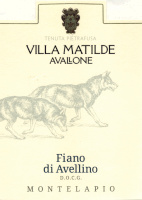
|
|
Fiano di Avellino Montelapio Tenuta Pietrafusa 2022 |
|
| Villa Matilde Avallone (Campania, Italy) | |
 Fiano Fiano | |
| Price: € 14.00 | Score: |
 Brilliant straw yellow and nuances of straw yellow, very transparent. Brilliant straw yellow and nuances of straw yellow, very transparent. Intense, clean, pleasing, refined and elegant, starts with hints of
apple, plum and hawthorn followed by aromas of broom, pineapple, citron,
pear, grapefruit, peach, hazelnut, honey, rosemary, basil and mineral. Intense, clean, pleasing, refined and elegant, starts with hints of
apple, plum and hawthorn followed by aromas of broom, pineapple, citron,
pear, grapefruit, peach, hazelnut, honey, rosemary, basil and mineral.
 Crisp attack and however balanced by alcohol, good body, intense
flavors, agreeable. Crisp attack and however balanced by alcohol, good body, intense
flavors, agreeable.
 Persistent finish with flavors of apple, plum and citron. Persistent finish with flavors of apple, plum and citron. 4 months in steel tanks. 4 months in steel tanks. |
|
 Pasta with fish and crustaceans, Sauteed white meat, Sauteed fish with mushrooms, Dairy products, Vegetable flans Pasta with fish and crustaceans, Sauteed white meat, Sauteed fish with mushrooms, Dairy products, Vegetable flans |
|
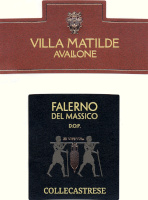
|
|
Falerno del Massico Rosso Collecastrese 2018 |
|
| Villa Matilde Avallone (Campania, Italy) | |
 Aglianico (80%), Piedirosso (20%) Aglianico (80%), Piedirosso (20%) | |
| Price: € 16.00 | Score: |
 Intense ruby red and nuances of garnet red, little transparency. Intense ruby red and nuances of garnet red, little transparency. Intense, clean, pleasing, refined and elegant, starts with hints of
plum, black cherry and dried violet followed by aromas of blackberry,
blueberry, raspberry, cocoa, tobacco, leather, licorice, mace, vanilla and
menthol. Intense, clean, pleasing, refined and elegant, starts with hints of
plum, black cherry and dried violet followed by aromas of blackberry,
blueberry, raspberry, cocoa, tobacco, leather, licorice, mace, vanilla and
menthol.
 Properly tannic attack and however balanced by alcohol, good body,
intense flavors, agreeable. Properly tannic attack and however balanced by alcohol, good body,
intense flavors, agreeable.
 Persistent finish with flavors of plum, black cherry and blackberry. Persistent finish with flavors of plum, black cherry and blackberry. 12 months in cask and barrique. 12 months in cask and barrique. |
|
 Broiled meat and barbecue, Roasted meat, Stewed meat with mushrooms, Hard cheese Broiled meat and barbecue, Roasted meat, Stewed meat with mushrooms, Hard cheese |
|
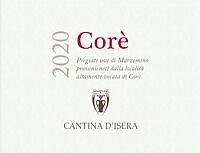
|
|
Trentino Superiore Marzemino d'Isera Corè 2020 |
|
| Cantina d'Isera (Trentino, Italy) | |
 Marzemino Marzemino | |
| Price: € 18.50 | Score: |
 Deep ruby red and nuances of ruby red, little transparency. Deep ruby red and nuances of ruby red, little transparency. Intense, clean, pleasing and refined, starts with hints of black
cherry, plum and blueberry followed by aromas of violet, geranium,
cyclamen, blackberry, raspberry and almond. Intense, clean, pleasing and refined, starts with hints of black
cherry, plum and blueberry followed by aromas of violet, geranium,
cyclamen, blackberry, raspberry and almond.
 Properly tannic attack and however balanced by alcohol, good body,
intense flavors, agreeable. Properly tannic attack and however balanced by alcohol, good body,
intense flavors, agreeable.
 Persistent finish with flavors of black cherry, plum and blueberry. Persistent finish with flavors of black cherry, plum and blueberry. Aged in steel and cement tanks. Aged in steel and cement tanks. |
|
 Cold cuts, Stuffed pasta with meat, Sauteed meat, Roasted white meat Cold cuts, Stuffed pasta with meat, Sauteed meat, Roasted white meat |
|
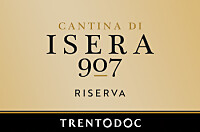
|
|
Trento Riserva Extra Brut Isera 907 2017 |
|
| Cantina d'Isera (Trentino, Italy) | |
 Chardonnay Chardonnay | |
| Price: € 30.50 | Score: |
 Pale straw yellow and nuances of straw yellow, very transparent, fine
and persistent perlage. Pale straw yellow and nuances of straw yellow, very transparent, fine
and persistent perlage.
 Intense, clean, pleasing, refined and elegant, starts with hints of
apple, banana and bread crust followed by aromas of acacia, plum,
grapefruit, pineapple, pear, citron, butter, praline, croissant and hints
of vanilla. Intense, clean, pleasing, refined and elegant, starts with hints of
apple, banana and bread crust followed by aromas of acacia, plum,
grapefruit, pineapple, pear, citron, butter, praline, croissant and hints
of vanilla.
 Effervescent and crisp attack, however balanced by alcohol, good body,
intense flavors, agreeable. Effervescent and crisp attack, however balanced by alcohol, good body,
intense flavors, agreeable.
 Persistent finish with flavors of apple, banana and plum. Persistent finish with flavors of apple, banana and plum. The base wine ferments in cask. Refermented in bottle and aged on its
lees for at least 50 months. The base wine ferments in cask. Refermented in bottle and aged on its
lees for at least 50 months.
|
|
 Stuffed pasta with fish, Roasted fish, Roasted white meat, Stewed fish, Mushroom soups Stuffed pasta with fish, Roasted fish, Roasted white meat, Stewed fish, Mushroom soups |
|
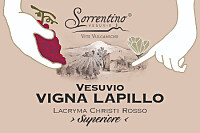
|
|
Vesuvio Lacryma Christi Superiore Rosso Vigna Lapillo 2018 |
|
| Sorrentino (Campania, Italy) | |
 Piedirosso (80%), Aglianico (20%) Piedirosso (80%), Aglianico (20%) | |
| Price: € 25.00 | Score: |
 Intense ruby red and nuances of garnet red, little transparency. Intense ruby red and nuances of garnet red, little transparency. Intense, clean, pleasing, refined and elegant, starts with hints of
plum, black cherry and dried violet followed by aromas of blueberry,
blackberry, tobacco, cocoa, licorice, undergrowth, leather and vanilla. Intense, clean, pleasing, refined and elegant, starts with hints of
plum, black cherry and dried violet followed by aromas of blueberry,
blackberry, tobacco, cocoa, licorice, undergrowth, leather and vanilla.
 Properly tannic attack and however balanced by alcohol, good body,
intense flavors, agreeable. Properly tannic attack and however balanced by alcohol, good body,
intense flavors, agreeable.
 Persistent finish with flavors of plum, black cherry and blueberry. Persistent finish with flavors of plum, black cherry and blueberry. Aged in cask. Aged in cask. |
|
 Broiled meat and barbecue, Stewed meat with mushrooms, Roasted meat, Cheese Broiled meat and barbecue, Stewed meat with mushrooms, Roasted meat, Cheese |
|
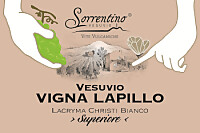
|
|
Vesuvio Lacryma Christi Superiore Bianco Vigna Lapillo 2020 |
|
| Sorrentino (Campania, Italy) | |
 Caprettone (80%), Greco (10%), Falanghina (10%) Caprettone (80%), Greco (10%), Falanghina (10%) | |
| Price: € 20.00 | Score: |
 Brilliant straw yellow and nuances of straw yellow, very transparency. Brilliant straw yellow and nuances of straw yellow, very transparency. Intense, clean, pleasing, refined and elegant, starts with hints of
apple, plum and hazelnut followed by aromas of broom, hawthorn, pineapple,
grapefruit, pear, peach, white melon, honey, rosemary and flint. Intense, clean, pleasing, refined and elegant, starts with hints of
apple, plum and hazelnut followed by aromas of broom, hawthorn, pineapple,
grapefruit, pear, peach, white melon, honey, rosemary and flint.
 Crisp attack and however balanced by alcohol, good body, intense
flavors, agreeable. Crisp attack and however balanced by alcohol, good body, intense
flavors, agreeable.
 Persistent finish with flavors of apple, plum and grapefruit. Persistent finish with flavors of apple, plum and grapefruit. 8 months in steel tanks. 8 months in steel tanks. |
|
 Pasta with fish and mushrooms, Broiled fish, Roasted white meat, Mushroom soups, Cheese, Fish soups Pasta with fish and mushrooms, Broiled fish, Roasted white meat, Mushroom soups, Cheese, Fish soups |
|
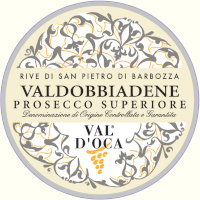
|
|
Valdobbiadene Prosecco Superiore Brut Rive di San Pietro di Barbozza 2021 |
|
| Val d'Oca (Veneto, Italy) | |
 Glera (85%), Other Grapes (15%) Glera (85%), Other Grapes (15%) | |
| Price: € 11.50 | Score: |
 Pale greenish yellow and nuances of greenish yellow, very transparent,
fine and persistent perlage. Pale greenish yellow and nuances of greenish yellow, very transparent,
fine and persistent perlage.
 Intense, clean, pleasing and refined, starts with hints of pear, peach
and wisteria followed by aromas of broom, jasmine, citron, pineapple, apple
and hazelnut. Intense, clean, pleasing and refined, starts with hints of pear, peach
and wisteria followed by aromas of broom, jasmine, citron, pineapple, apple
and hazelnut.
 Crisp and effervescente attack, however balanced by alcohol, light
body, intense flavors, agreeable. Crisp and effervescente attack, however balanced by alcohol, light
body, intense flavors, agreeable.
 Persistent finish with flavors of pear, peach and pineapple. Persistent finish with flavors of pear, peach and pineapple. Produced by refermentation in closed tank. Produced by refermentation in closed tank. |
|
 Vegetable and crustacean appetizers, Risotto with crustaceans, Sauteed fish, Eggs, Dairy products Vegetable and crustacean appetizers, Risotto with crustaceans, Sauteed fish, Eggs, Dairy products |
|
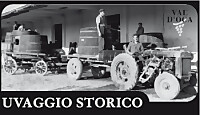
|
|
Valdobbiadene Prosecco Superiore Dry Uvaggio Storico |
|
| Val d'Oca (Veneto, Italy) | |
 Glera (85%), Perera, Bianchetta, Verdiso (15%) Glera (85%), Perera, Bianchetta, Verdiso (15%) | |
| Price: € 17.00 | Score: |
 Brilliant greenish yellow and nuances of greenish yellow, very
transparent, fine and persistent perlage. Brilliant greenish yellow and nuances of greenish yellow, very
transparent, fine and persistent perlage.
 Intense, clean, pleasing and refined, starts with hints of apple, kiwi
and wisteria followed by aromas of hawthorn, broom, pear, peach, pineapple,
tangerine and linden. Intense, clean, pleasing and refined, starts with hints of apple, kiwi
and wisteria followed by aromas of hawthorn, broom, pear, peach, pineapple,
tangerine and linden.
 Effervescent and crisp attack, however balanced by alcohol, light body,
pleasing sweet touch. Effervescent and crisp attack, however balanced by alcohol, light body,
pleasing sweet touch.
 Persistent finish with flavors of apple, kiwi and tangerine. Persistent finish with flavors of apple, kiwi and tangerine. Produced by refermentation in closed tank. Produced by refermentation in closed tank. |
|
 Aperitifs, Risotto with crustaceans and vegetables, Sauteed crustaceans, Eggs, Vegetable soups Aperitifs, Risotto with crustaceans and vegetables, Sauteed crustaceans, Eggs, Vegetable soups |
|
|
|
|
Terra di Confine 2020 |
|
| Tenuta Vitalonga (Umbria, Italy) | |
 Montepulciano (70%), Merlot (30%) Montepulciano (70%), Merlot (30%) | |
| Price: € 18.00 | Score: |
 Intense ruby red and nuances of garnet red, little transparency. Intense ruby red and nuances of garnet red, little transparency. Intense, clean, pleasing, refined and elegant, starts with hints of
black cherry, plum and black currant followed by aromas of violet,
blueberry, chocolate, tobacco, cinnamon, mace, vanilla and menthol. Intense, clean, pleasing, refined and elegant, starts with hints of
black cherry, plum and black currant followed by aromas of violet,
blueberry, chocolate, tobacco, cinnamon, mace, vanilla and menthol.
 Properly tannic attack and however balanced by alcohol, good body,
intense flavors, pleasing roundness. Properly tannic attack and however balanced by alcohol, good body,
intense flavors, pleasing roundness.
 Persistent finish with flavors of black cherry, plum and black currant. Persistent finish with flavors of black cherry, plum and black currant. 12 months in barrique, 24 months in bottle. 12 months in barrique, 24 months in bottle. |
|
 Broiled meat and barbecue, Roasted meat, Stewed meat with mushrooms, Cheese Broiled meat and barbecue, Roasted meat, Stewed meat with mushrooms, Cheese |
|
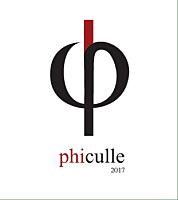
|
|
Phiculle 2017 |
|
| Tenuta Vitalonga (Umbria, Italy) | |
 Cabernet Sauvignon (70%), Sangiovese (30%) Cabernet Sauvignon (70%), Sangiovese (30%) | |
| Price: € 22.00 | Score: |
 Intense ruby red and nuances of garnet red, little transparency. Intense ruby red and nuances of garnet red, little transparency. Intense, clean, pleasing, refined and elegant, starts with hints of
plum, black currant and dried violet followed by aromas of black cherry,
blueberry, blackberry, chocolate, tobacco, face powder, mace, licorice,
leather, vanilla and eucalyptus. Intense, clean, pleasing, refined and elegant, starts with hints of
plum, black currant and dried violet followed by aromas of black cherry,
blueberry, blackberry, chocolate, tobacco, face powder, mace, licorice,
leather, vanilla and eucalyptus.
 Properly tannic attack and however balanced by alcohol, good body,
intense flavors, pleasing roundness. Properly tannic attack and however balanced by alcohol, good body,
intense flavors, pleasing roundness.
 Persistent finish with flavors of plum, black currant and black cherry. Persistent finish with flavors of plum, black currant and black cherry. 15 months in barrique, at least 12 months in bottle. 15 months in barrique, at least 12 months in bottle. |
|
 Broiled meat and barbecue, Roasted meat, Stewed meat with mushrooms, Hard cheese Broiled meat and barbecue, Roasted meat, Stewed meat with mushrooms, Hard cheese |
|
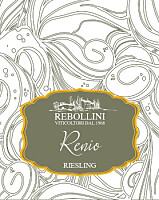
|
|
Oltrepo Pavese Superiore Riesling Renio 2021 |
|
| Rebollini (Lombardy, Italy) | |
 Riesling Riesling | |
| Price: € 17.00 | Score: |
 Intense straw yellow and nuances of straw yellow, very transparent. Intense straw yellow and nuances of straw yellow, very transparent. Intense, clean, pleasing, refined and elegant, starts with hints of
apple, peach and plum followed by aromas of broom, hawthorn, flint, citron,
pear, pineapple, grapefruit, mango and hazelnut. Intense, clean, pleasing, refined and elegant, starts with hints of
apple, peach and plum followed by aromas of broom, hawthorn, flint, citron,
pear, pineapple, grapefruit, mango and hazelnut.
 Crisp attack and however balanced by alcohol, good body, intense
flavors, agreeable. Crisp attack and however balanced by alcohol, good body, intense
flavors, agreeable.
 Persistent finish with flavors of apple, peach and citron. Persistent finish with flavors of apple, peach and citron. Aged in steel tanks. Aged in steel tanks. |
|
 Pasta with fish and mushrooms, Stewed white meat, Stewed fish with mushrooms, Vegetable flans, Dairy products Pasta with fish and mushrooms, Stewed white meat, Stewed fish with mushrooms, Vegetable flans, Dairy products |
|
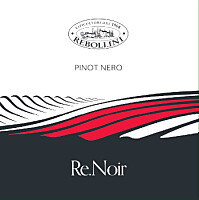
|
|
Pinot Nero dell'Oltrepo Pavese Riserva Re.Noir 2018 |
|
| Rebollini (Lombardy, Italy) | |
 Pinot Nero Pinot Nero | |
| Price: € 44.00 | Score: |
 Brilliant ruby red and nuances of garnet red, moderate transparency. Brilliant ruby red and nuances of garnet red, moderate transparency. Intense, clean, pleasing, refined and elegant, starts with hints of
cherry, raspberry and dried rose followed by aromas of cyclamen,
strawberry, pomegranate, blueberry, plum, chocolate, cinnamon, tobacco,
leather, face powder, vanilla and menthol. Intense, clean, pleasing, refined and elegant, starts with hints of
cherry, raspberry and dried rose followed by aromas of cyclamen,
strawberry, pomegranate, blueberry, plum, chocolate, cinnamon, tobacco,
leather, face powder, vanilla and menthol.
 Properly tannic attack and however balance by alcohol, good body,
intense flavors, pleasing crispness. Properly tannic attack and however balance by alcohol, good body,
intense flavors, pleasing crispness.
 Persistent finish with flavors of cherry, raspberry and strawberry. Persistent finish with flavors of cherry, raspberry and strawberry. 12 months in barrique. 12 months in barrique. |
|
 Stuffed pasta with meat and mushrooms, Roasted meat, Stewed meat with mushrooms, Cheese Stuffed pasta with meat and mushrooms, Roasted meat, Stewed meat with mushrooms, Cheese |
|
|
||||||||
|
DiWineTaste Polls
|
| |||||||
Privacy Policy | |||||||


| Copyright © 2002-2024 Antonello Biancalana, DiWineTaste - All rights reserved |
| All rights reserved under international copyright conventions. No part of this publication and of this WEB site may be
reproduced or utilized in any form or by any means, electronic or mechanical, without permission in writing from DiWineTaste. |